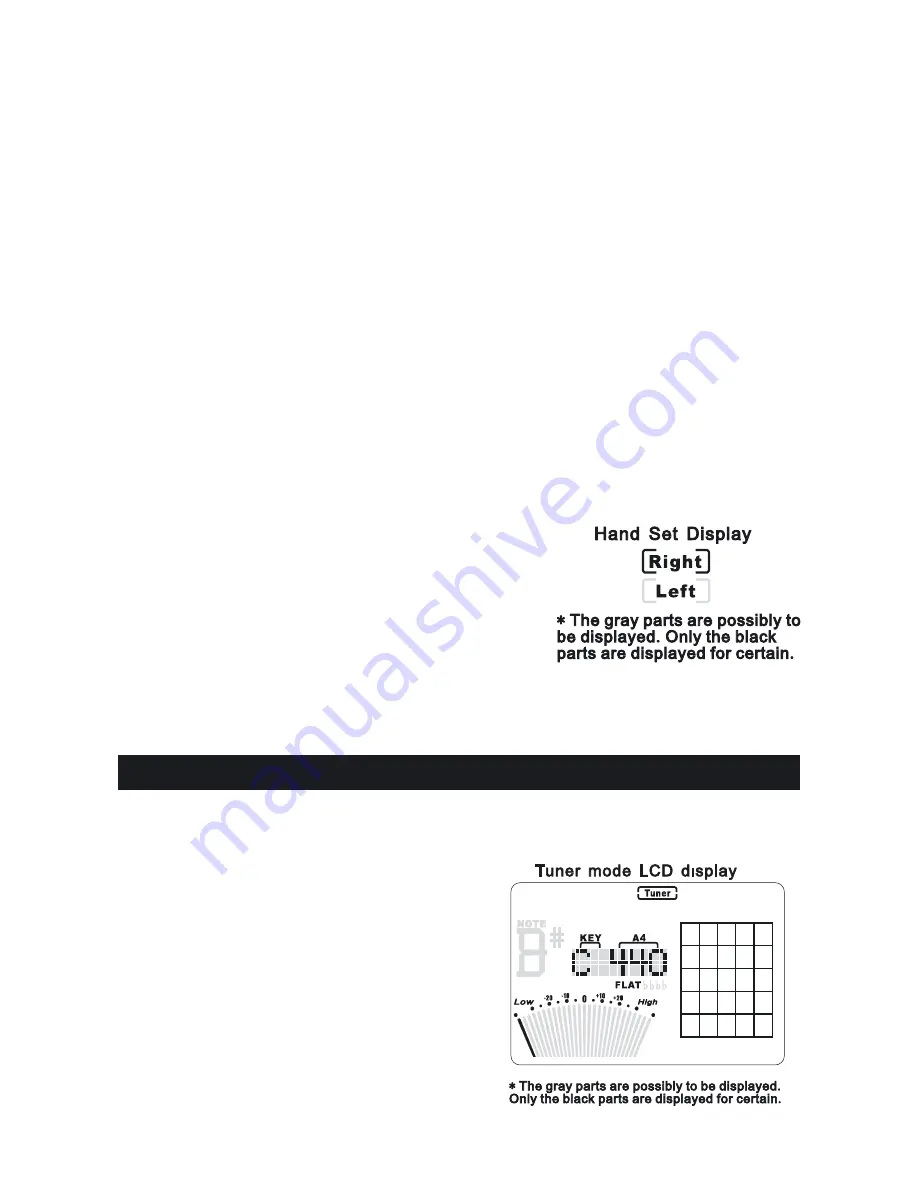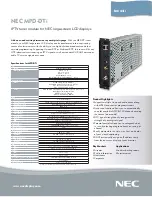
7
previous steps. If the BTU-1000 find the related chord name, the
LCD will display the information as the above picture B. Chord name
will display at position C. Chord position will display at position D.
If the searching result includes more than one chord name, press
button
➂
, the flashing cursor will move to position C. The chord
name will flash. You can press button
➅
and
➆
to check other chord
names. The flashing cursor will move among position C, D and E.
When the flashing cursor is at position D, pressing button
➄
will stop
the flashing position D and position F will start flashing. At this time
press button
➅
and
➆
, you can check other chord voices under this
chord name. Press button
➄
to confirm. When the flashing cursor is
at the area E (the whole chord position picture), press button
➄
you
will begin new chord position setting. Repeat the previous steps to
have a new search. If the searching result has only one chord name,
the cursor will not move to position C in the LCD.
5. Right and left handed chord setting.
No matter it’s under chord1 or chord2
mode, press button
➁
for about 2
seconds, you will see right and left
displaying on the LCD as the left picture.
The cursor will flash at the position you
have chosen. Press button
➅
and
➆
to
select the mode you need. Then press
button
➄
to confirm and leave right and left handed chord setting.
TUNER MODE
1.
After entering this mode, BTU-1000 can start tuning automatically if
there is any sound input. Choose tuning with mic or input jack: When
tuning with mic, don’t plug any
object in the input jack. Otherwise
the mic will not work. And please
try to make the sounding part of
the music instrument closer to the
mic of BTU-1000 to get best tuning
result.
When tuning with input jack, please
plug the output plug of pick up in the
input jack of BTU-1000.
Summary of Contents for BTU-1000
Page 5: ...4 ...





























